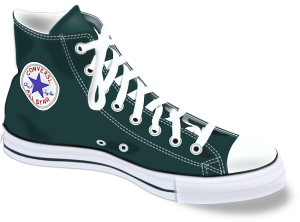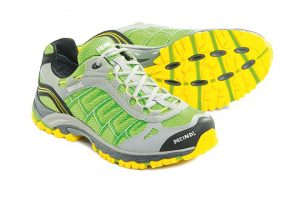The adage to “dress for success” applies to everything you do–including your workout. Maybe we should say especially your workout. Not so much the clothing, though you do want to wear comfortable clothes that are light weight, allow your skin to breathe, and don’t interfere with movement, but it’s the shoes that really make a difference. Offering protection and support for your feet, the shoes you choose should provide a sturdy foundation for whatever exercise you do. With the innovations in athletic shoes over the years, the basic one pair of gym shoes for every activity is a thing of the past. You now have more choices than Keds or Converse, and you need to consider what your personal exercise routine involves when you pick a pair of workout shoes.
Weight Lifting Shoes
When you lift weights, your body has to support excessive loads that you don’t normally haul around during a typical day. That means you need weight lifting shoes that offer support without being too cushioned. Shannon Clark of BodyBuilding.com points out that those with weak ankle joints should look for shoes that extend up over the ankles for added support. You don’t want or need a lot of cushioning, either. Many weight lifting shoes are made with little or no cushion at all because too much padding in the insole makes for an unstable foundation. Wrestling shoes are often the gym shoes of choice for weight lifters because they’re kind of like high-tops but without the ample cushioning that basketball players need, plus the soles have traction to keep your feet from sliding when you lift. The one element that makes them less-than-perfect as weight lifting shoes is that the forefoot tends to be tapered, as many traditional shoes are. Nick Colas‘s article for BodyBuilding.com explains that your toes need to be able to spread out when you lift weights, to provide the most sturdy foundation possible. That’s why good weight lifting shoes are wider in the forefoot area than other gym shoes.
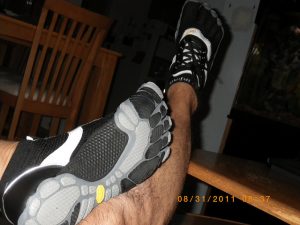
Barefoot shoes are a comfortable fad, but you won’t get much protection with them for weightlifting and they may not provide the traction you need, either.
Image via osseous/Flickr
Then there are the barefoot lifting and special weight lifting shoes that are designed to offer an experience as close as possible to lifting barefoot. Aside from freeing your feet up to do what they naturally do when you lift weights, the argument for barefoot lifting and minimalist weight lifting shoes is that they place your feet in a flat, or almost flat, position. That is supposed to allow you to muster the force you need to lift heavy. Also, if you’re lifting barefoot or in a barefoot shoe, there will be no cushioned sole to cause instability. Though barefoot lifting and minimalist shoes do have their devotees, Muscle and Fitness advises that those two options don’t provide much, or any, protection for your feet if a weight or bar is dropped. Also, you won’t have any traction in bare feet, and the flexible soles of barefoot shoes aren’t great at holding your feet stationary, so you won’t have stability with them.
Running Shoes
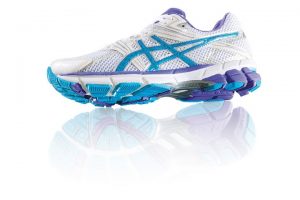
Running shoes are designed to provide comfort, support, and shock absorption during your run. The surface you prefer to run on may make a difference in which running shoe you choose.
High impact exercise such as running requires different things from a shoe than weight lifting does. Running shoes typically have thick, medium-firm soles and significant cushion inside to help absorb impact. Runner’s World offers up a few different areas runners need to consider when buying running shoes, starting with a snug heel that doesn’t slip. When your foot pushes off to propel you forward, your toes will need room to spread, so a forefoot area that is wide enough for your foot to move a bit from side to side is essential. The shoe’s upper should feel secure without putting pressure on your instep. Running shoes should flex in the same place your foot flexes, so test them by pressing the tip of the shoe on a hard surface such as the floor or a countertop to see where the natural flex point is. Runners put their shoes through a lot, requiring running shoes to be replaced more frequently than other types of athletic shoes. Web MD recommends dating your running shoes and keeping track of the mileage you put on them, then replace them every 6 months or 500 miles, whichever comes first.
Aerobic Shoes
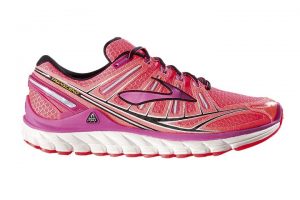
Just like running shoes, aerobic shoes should have a wide sole and cushioning, but the placement of the padding is different.
Even low-impact aerobics subjects your joints to some level of force, so you’ll need shoes with cushion for shock absorption if you favor aerobic workouts. Don’t make the mistake of thinking your thickly padded running shoes can serve double duty. According to Happy Feet Podiatry Clinic in Napa, California, the majority of cushioning in running shoes is in the heel, while the cushioning in aerobic shoes needs to be under the balls of your feet. Aerobic shoes should support your arches without putting pressure on them, and the upper should be comfortable but provide support as well. The forefront of the shoe shouldn’t be tight, either, as you’ll be executing a number of lateral and side to side moves.
Cross Training Shoes
Many people enjoy getting their exercise through more than one means, and buying a special shoe for each workout may not be in the budget. That’s where cross training shoes come in. Designed to be worn for a number of different types of workouts, they are as close to one-shoe-fits-all-activities footwear as you can come. However, you’ll probably find that, although they get the job done, they aren’t ideal for every type of exercise you wear them for. LIVESTRONG explains that, though cross training shoes are breathable, their multipurpose design tends to make them heavier than you might want for some activities. They do have ample cushioning, though, and tend to have thick, wide soles that offer good support, stability, and traction.
When fitting any athletic shoe, your toes shouldn’t be crammed up against the front. Instead, make sure there’s about a finger-width of space to prevent irritation, injury, and discomfort. Also, shop for workout shoes in the afternoon or evening. Your feet swell over the course of the day, and they swell during exercise as well, so it’s best to try on shoes after you’ve walked around for several hours.

